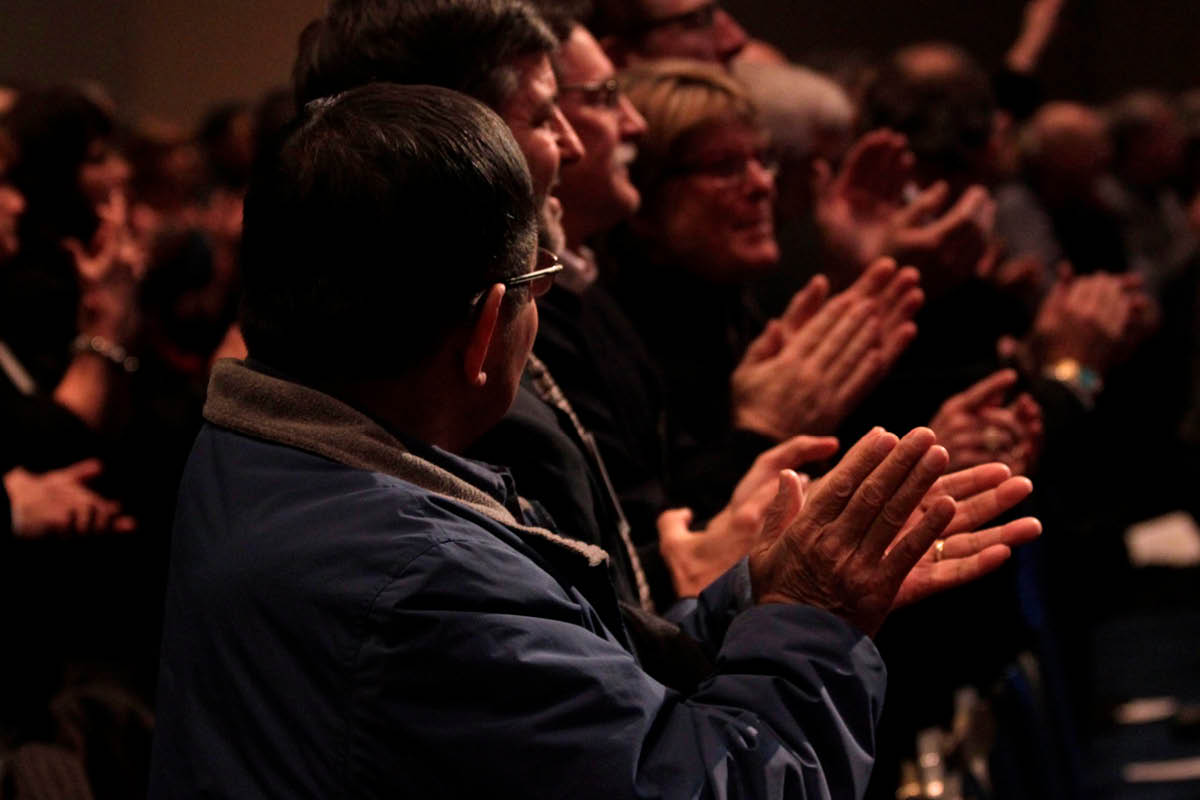In July 2016, a world record for the largest orchestra was created when 7,548 musicians assembled in a Frankfurt sports stadium to play Beethoven’s Ode to Joy and Dvořák’s Symphony No 9. While this may have been a triumph of quantity over quality, few would deny that human beings’ capacity to come together in large numbers and create euphonious sound is a remarkable achievement.

Photo © James Brooks/Wikimedia Commons.
But how can we, the audience, best respond? Like music-making itself, applause also appears to be a universal phenomenon. As far as Western culture is concerned, we can be sure it stretches back at least as far as Ancient Rome and has its origins in two not entirely unrelated activities – politics and theatre. As Megan Garber notes in a piece in The Atlantic, applause is an early form of social media in which performers, politicians and thespians gained feedback for their efforts. (Indeed, on modern social media you can employ the 👏 emoji to signal your approval. It has a quite different meaning to ‘liking’ something or the 🙂 emoji.)
Whereas in the theatre or in politics, we may wish to show our...










Comments
Log in to join the conversation.